Perspectiva diacrónica de la prefijación locativa intermedia del español
Departament/Institut
Universitat de Girona. Departament de Filologia i Comunicació
Programa de doctorat
Programa de Doctorat en Ciències Humanes, del Patrimoni i de la Cultura
Resum
This research describes the evolution that the prefix inter has undergone from Latin to current Spanish, while focusing on the formation models of the derivatives generated by the prefix and on its meaning. Thus, we can confirm that the prefix inter- undergoes a semantic change in its evolution, from the locative meaning (Latin inter-eo 'to go in the middle') to a more abstract value of participation (esp. interdepartmental) or reciprocity (esp. intercomunicar). In Latin, the derivatives of inter- respond to a compositional structure [inter- + verbal base] [EO 'to go' > intereo 'to go in the middle; DUCO 'to direct, lead' > interduco 'to bring in' (Acedo-Matellán 2016)], from which we have inherited, for example, interceder ('to intercede'), interponer ('to interpose'), intervenir ('to intervene'). In the diachrony of the prefix, it is very significant that in the 18th and 19th centuries prefixed formations emerged from nominal bases: [inter- + nominal base]. The productivity of these new derivatives in romance is more noticeable in adjectival category formations with a nominal base intercultural ('intercultural'), intercelular ('intercellular'), intermuscular ('intermuscular'), interactive ('interactive'), interbank ('interbank'), which mostly belong to the technical or scientific field. The analysis of the texts documented in the 15th, 18th and 19th centuries, key stages in the process of prefixation, have made it possible to classify the formations based on two morphological patterns: the Latin pattern, where the derivatives have a verbal base, and the Romance pattern, where the formations are nominally based. Finally, a new classification has been established which includes the new verbal formations created in Spanish in which the prefix provides an abstract value (of participation or reciprocity), the post-Romance pattern. For the development of the analysis of these derivatives, different textual corpora (CREA, CORDE, CE) of the Spanish language have been used as well as several reference dictionaries of both Spanish (DLE, NTLLE, CLAVE) and Latin (OLD, NIERMEYER)
Aquesta investigació descriu l’evolució que ha sofert el prefix inter- des del llatí fins a l’espanyol actual i se centra en els models formatius dels derivats que genera el prefix i en el seu significat. Així, s’afirma que el prefix inter- experimenta un canvi semàntic en la seva evolució, des del significat locatiu (llatí inter-eo ‘anar al mig’) a un valor més abstracte de participació (esp. interdepartamental) o reciprocitat (esp. intercomunicar). En llatí, els derivats en inter- responen a una estructura composicional [inter- + base verbal] [EO ‘anar > intereo ‘anar al mig; DUCO ‘dirigir, conduir’ > interduco ‘portar cap a dins’ (Acedo-Matellán 2016)], dels que hem heretat, per exemple, interceder (‘intercedir’), interponer (‘interposar’), intervenir (‘intervenir’). En la diacronia del prefix, és molt significatiu el fet que en els segles XVIII i XIX emergeixen formacions prefixades a partir de bases nominals: [inter- + base nominal]. La productivitat d’aquests nous derivats en romanç és més notòria en formacions de categoria adjetival amb base nominal intercultural (‘intercultural’), intercelular (‘intercel·lular’), intermuscular (‘intermuscular’), interactivo (‘interactiu’), interbancario (‘interbancari’), les quals pertanyen, majoritàriament, a l’àmbit tècnic o científic. L’anàlisi dels textos documentats en els segles XV, XVIII i XIX, etapes clau en el procés de prefixació, han permès de classificar les formacions a partir de dos patrons morfològics: el patró llatí, on els derivats tenen base verbal i el patró romànic, on les formacions són de base nominal. Finalment, s’ha establert una nova classificació on s’inclouen les noves formacions verbals creades en espanyol en les quals el prefix aporta un valor abstracte (de participació o reciprocitat), el patró posromànic. Per al desenvolupament de l’anàlisi d’aquests derivats, s’han utilitzat diferents corpus textuals (CREA, CORDE, CE) de la llengua espanyola i diversos diccionaris de referència tant de l'espanyol (DLE, NTLLE, CLAVE) com del llatí (OLD, NIERMEYER)
Paraules clau
Morfologia; Morfología; Morphology; Diacronia; Diacronía; Diachrony; Prefixació; Prefixación; Prefication; Lingüística; Linguistics; Semàntica; Semántica; Semantics; Llatí; Latín; Latin; Espanyol; Español; Spanish; Castellà; Castellano; Spanish language
Matèries
81 - Lingüística i llengües



